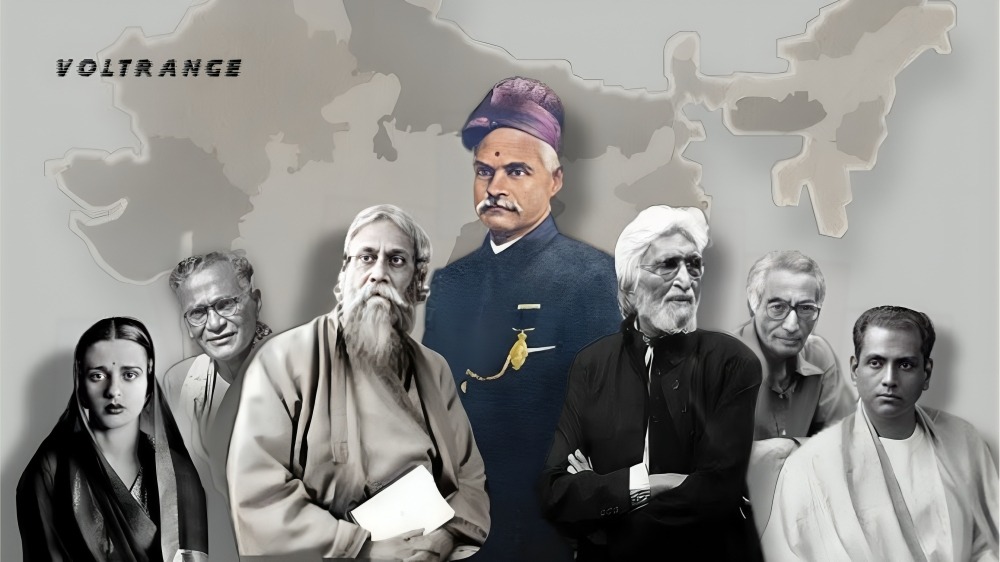
Famous Indian Artists and Their Paintings
India’s rich cultural history is reflected in its art, which has evolved over centuries. From traditional styles to modern interpretations, Indian artists have left a lasting impression on the global art scene. While it can be difficult to trace the roots of every artist who has shaped Indian art, a few have risen to international prominence, becoming symbols of the country’s artistic heritage. In this post, we’ll take a closer look at the 10 most famous Indian artists and their noteworthy contributions to the world of art.
1. Raja Ravi Varma
Considered one of India’s most revered artists, Raja Ravi Varma (1848–1906) is often the first name that comes to mind when discussing Indian art. He was a pioneer in blending European artistic techniques with traditional Indian themes, making his work accessible to a wide audience. One of his most iconic paintings, “Damayanti and the Swan,” beautifully portrays Indian mythology with a touch of realism. Varma’s ability to fuse these styles has earned him a permanent place in India’s artistic legacy.
2. Rabindranath Tagore
While best known as a Nobel Prize-winning writer, Rabindranath Tagore also made significant contributions to Indian art. Tagore began painting in his sixties, using expressive lines and bold shapes to create artworks that reflected his philosophical thoughts. His work, “Untitled (Self-Portrait),” is a striking example of his unique artistic style, which blends strong, minimal brushstrokes with deep emotion. Tagore’s paintings offer a window into his complex character and continue to inspire admiration.
3. Amrita Sher-Gil
Often referred to as the “Frida Kahlo of India,” Amrita Sher-Gil is celebrated for her deeply introspective self-portraits and her impact on modern Indian art. Born in 1913, Sher-Gil’s work often explored themes of identity and emotion, drawing on her Western training and Indian heritage. Her painting, “Self-Portrait,” reflects the complexity of her cultural background and inner world. Despite her untimely death at the age of 28, her legacy remains influential worldwide.
4. M.F. Husain
One of India’s most celebrated modern artists, Maqbool Fida Husain (1915–2011), often referred to as the “Picasso of India,” is known for his bold use of color and dynamic compositions. Husain’s art often explored Indian mythology and culture, with one of his most famous pieces being “The Blue Lady,” which exemplifies his fascination with the female form. His controversial yet powerful work continues to generate discussion and has brought global attention to Indian contemporary art.
5. Tyeb Mehta
A master of conveying emotion through abstract forms, Tyeb Mehta (1925–2009) is best known for depicting the chaos and trauma that marked India’s Partition. His “Falling Figure” series is a haunting portrayal of human suffering, capturing the existential crises of that era. Mehta’s work is revered for its stark portrayal of India’s history and his ability to evoke deep feelings through minimalist forms and colors.
6. S.H. Raza
Born in 1922, S.H. Raza is best known for his spiritual and symbolic works. His “Bindu” series, which represents the origin of the universe, is considered a landmark in Indian modernist art. By blending Indian symbolism with Western abstract techniques, Raza’s work creates a meditative experience for viewers. His geometric forms and vibrant colors make his art a bridge between traditional Indian mysticism and modern artistic thought.
7. Jamini Roy
Jamini Roy (1887–1972) played a significant role in reviving traditional Indian folk art. After training in European academic styles, Roy shifted his focus to Indian folk traditions, particularly those of Bengal. His painting “Mother and Child” is an excellent example of his minimalist yet deeply emotive style, using flat colors and sharp lines to depict rural life and cultural heritage. Roy’s work sparked a renaissance in Indian art by returning to its roots.
8. Nandalal Bose
A key figure in the Bengal School of Art, Nandalal Bose (1882–1966) was deeply involved in the Swadeshi movement and used his art to promote Indian nationalism. His painting “Bapu,” a poignant depiction of Mahatma Gandhi, captures the essence of India’s struggle for independence. Bose’s art played an integral role in reviving traditional Indian aesthetics and contributing to the country’s cultural identity during the freedom movement.
9. Abanindranath Tagore
The nephew of Rabindranath Tagore, Abanindranath Tagore (1871–1951), was the founder of the Bengal School of Art and sought to establish a distinctly Indian art form. His famous painting “Bharat Mata” (Mother India) is a powerful representation of India as a serene goddess, embodying the spiritual and cultural richness of the country. Abanindranath’s work played a crucial role in the development of modern Indian art.
10. Satish Gujral
A versatile artist, Satish Gujral (1925–2020) worked across multiple mediums, including painting, sculpture, and architecture. His early work, such as “Days of Glory,” captures the trauma of India’s Partition. In addition to his art, Gujral made a lasting mark in architecture, with projects like the Belgian Embassy in New Delhi reflecting his innovative approach. Gujral’s artistic contributions continue to inspire and resonate within the Indian art community.
Conclusion
Indian art has seen tremendous evolution, from traditional styles to modern interpretations. These 10 artists have made significant contributions to the country’s artistic heritage, leaving a lasting impact both nationally and internationally. Whether through painting, sculpture, or mixed media, each of these artists has played a critical role in shaping the landscape of Indian art.
FAQs
Who is considered the father of modern Indian art?
Raja Ravi Varma is often regarded as the father of modern Indian art due to his pioneering work in blending European techniques with Indian themes.
What is the significance of S.H. Raza’s “Bindu” series?
S.H. Raza’s “Bindu” series represents the origin and unity of the universe. The geometric forms and vibrant colors in these paintings combine Indian spirituality with modern abstract art.
How did Jamini Roy contribute to Indian art?
Jamini Roy revitalized traditional Indian folk art, particularly from Bengal, by incorporating its minimalist style and vibrant colors into his work, thus sparking a revival of Indian cultural heritage.
What themes did Tyeb Mehta explore in his work?
Tyeb Mehta often explored themes of human suffering, existential crises, and the trauma of Partition in his paintings, with works like the “Falling Figure” series reflecting these emotions.
How did Satish Gujral impact Indian architecture?
Apart from being a celebrated artist, Satish Gujral made a significant impact on Indian architecture, most notably with the design of the Belgian Embassy in New Delhi, which showcased his ability to blend art and architecture.





More Stories
Is Sansui an Indian Company? True Or Not
Handles Salary Revision and Appraisal: 10 Fact
Is Walmart an Indian Company? True Or Not